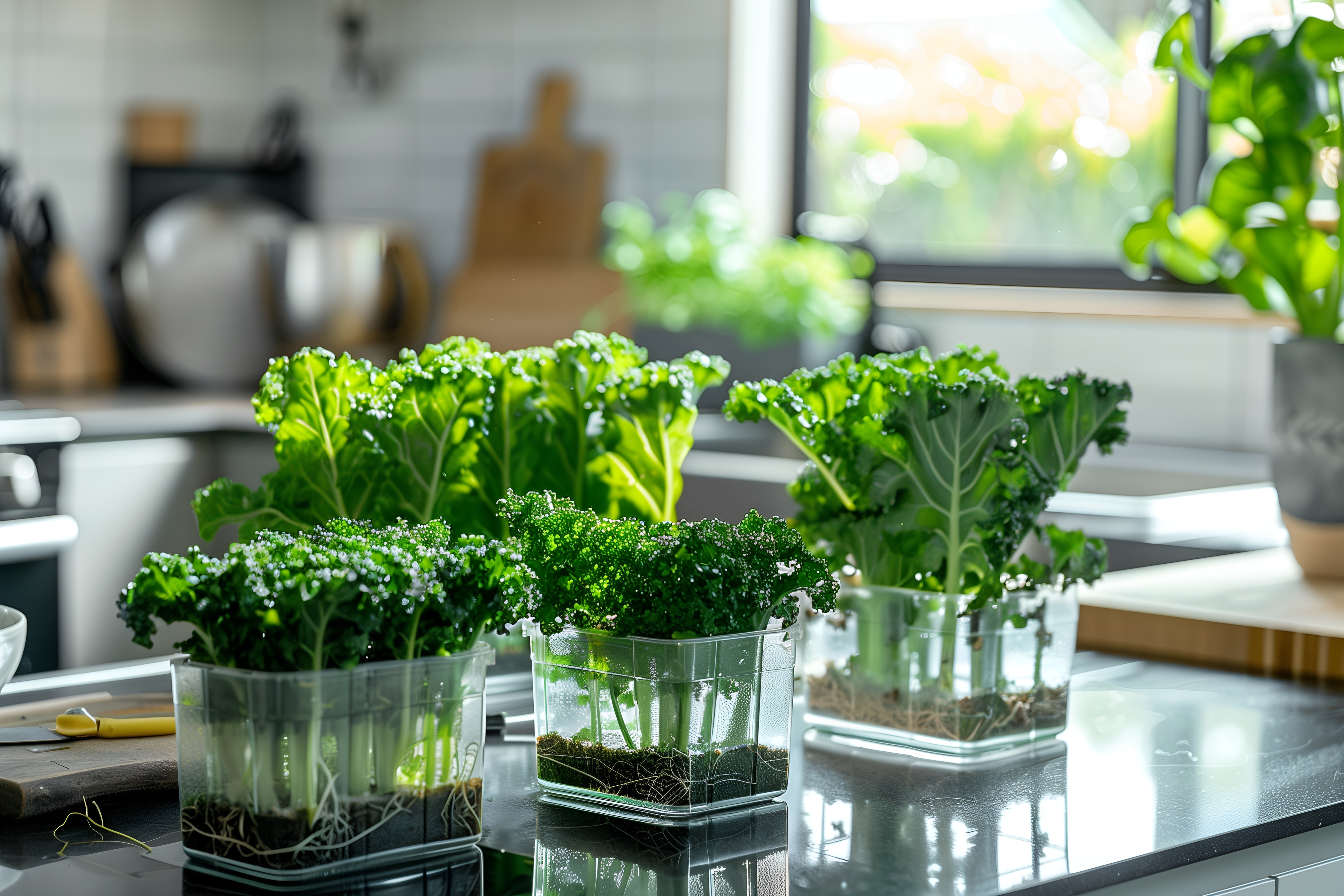Kale is a nutrient-dense leafy green that’s gaining popularity for its health benefits and versatility in the kitchen. Growing kale indoors using hydroponics is a fantastic way for Australian home gardeners, especially on the East Coast, to enjoy fresh, pesticide-free greens all year round.
🌱 Why Grow Kale Hydroponically Indoors in Australia?
- 🥬 Consistent supply: Grow fresh kale regardless of outdoor weather or seasons.
- 💧 Water-efficient: Uses less water compared to traditional soil gardening.
- 🌞 Ideal for East Coast climates: Indoor setups avoid pests and harsh weather effects common in NSW, VIC, and QLD.
- 🛠️ Great for DIY hydroponic beginners: Simple systems like Kratky or NFT work well for kale.
🧪 Best Kale Varieties for Indoor Hydroponics
Try these easy-to-grow kale types suited for indoor Australian environments:
- Curly Kale — classic and hardy, with tightly curled leaves
- Lacinato (Dinosaur) Kale — dark green leaves with a slightly sweeter taste
- Red Russian Kale — tender leaves with a mild flavor and purple stems
- Siberian Kale — cold-tolerant and fast-growing
🌿 Tip: Curly kale is especially resilient and great for beginners.
🛠 Hydroponic Setup Essentials for Kale
| Item | Purpose |
|---|---|
| Net pots (3-inch recommended) | Supports larger root systems |
| Growing medium (clay pebbles, coco coir) | Root stability and moisture retention |
| Nutrient solution | Balanced for leafy greens, moderate nitrogen |
| Reservoir container | Holds nutrient solution |
| Grow light (if indoor or low light) | Ensures 12–16 hours of light daily |
| pH & EC testers | Monitor nutrient solution health |
🌿 Simple DIY Method: Kratky Hydroponics for Kale
The Kratky Method is a great passive system to grow kale without pumps or electricity, perfect for Aussie beginners.
Steps:
- Fill a container (bucket, jar, tub) with nutrient solution.
- Place net pots with kale seedlings in the container lid.
- Ensure roots touch the water but leave an air gap for oxygen.
- Position near a sunny window or use grow lights for 12–16 hours/day.
- Monitor water and nutrient levels weekly.
🔧 Kale’s larger root system means a slightly bigger reservoir is helpful.
🌡 Optimal Growing Conditions for Kale Indoors
| Factor | Ideal Range |
|---|---|
| Temperature | 18–24°C (cool to moderate temps) |
| Light | 12–16 hours daily (natural or LED) |
| pH | 6.0–7.0 |
| EC | 1.2–2.0 mS/cm |
| Humidity | Moderate (40–60%) |
🩺 Common Issues & Solutions for Kale
| Problem | Cause | Fix |
|---|---|---|
| Slow growth | Insufficient light or nutrients | Increase light intensity, check nutrient mix |
| Yellowing lower leaves | Nitrogen deficiency or pH imbalance | Adjust nutrient solution, check pH |
| Leaf curling | Heat stress or low humidity | Provide shade, increase air circulation |
| Root rot | Poor oxygenation or stagnant water | Increase air gap or use air pump |
🥬 Harvesting Kale Hydroponically
- Kale is typically ready to harvest 40–60 days after planting.
- Pick outer leaves first; the plant will continue producing new leaves.
- For full harvest, cut the entire plant 5 cm above the base — it may regrow.
🧰 Australian Supplies & Growing Tips
- Hydroponic nutrient kits are available at Bunnings and online hydroponics stores.
- pH and EC meters can be purchased locally.
- Use full spectrum LED grow lights during low-light months for best results.
🛠 DIY 3D Printed Hydroponic Accessories Coming Soon
I’m currently designing 3D-printable components tailored for kale growers, including:
- Larger net pots for robust root systems
- Modular lid and reservoir systems for easy maintenance
- Printable grow trays optimized for indoor balconies and small spaces
Stay tuned for build logs, STL files, and kit sales!
📘 Download My Hydroponics Starter Kit PDF
Get the complete guide with setup checklists and care tips — coming soon on Gumroad!
🙋 FAQs
Q: Can kale tolerate Australian summer heat indoors?
A: Kale prefers cooler temps; in hot summers, provide shade and good airflow.
Q: How often do I need to change the nutrient solution?
A: Change every 10–14 days or when pH and EC levels drift significantly.
Q: Can I grow kale year-round on the East Coast?
A: Yes! Indoor hydroponics allows for year-round production with controlled conditions.
Have questions or want to share your kale growing journey? Comment below or tag @hydroponixlife on Instagram!
